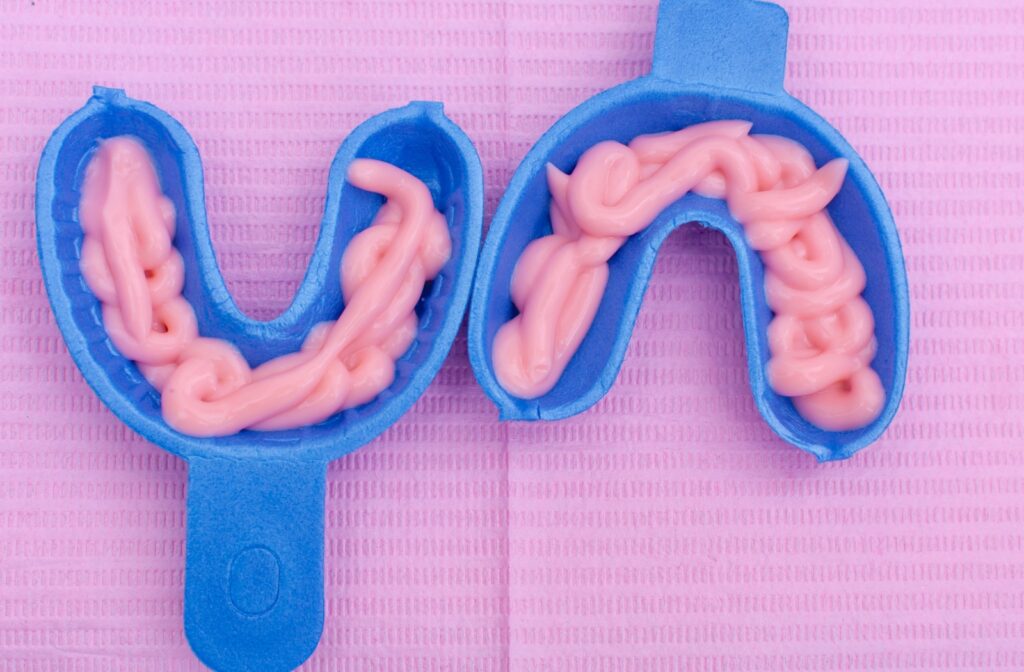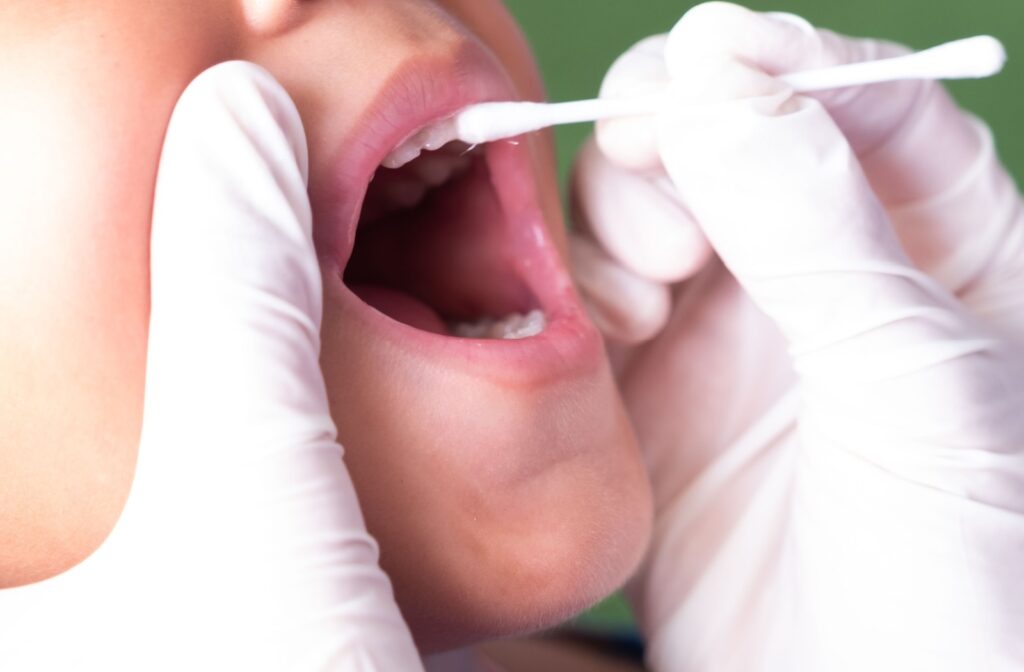You brush twice a day and floss regularly, but cavities can still sneak up on you. Your teeth face constant attacks from bacteria and acids throughout the day, and sometimes your regular routine needs extra backup.
Understanding preventive dental care can help you stay ahead of potential problems, and regular dental exams and cleanings provide the foundation for oral health.
Fluoride treatments give your teeth an extra layer of protection by strengthening your enamel and helping reverse early signs of decay. Whether fluoride rinses, varnish, or gel is used, these quick, noninvasive treatments can help keep your smile healthy and reduce your need for fillings down the road.
Fluoride in the water is critical to children, especially under the age of 12. It’s important in helping the teeth that are developing in children form a stronger layer of enamel. This makes them less decay-prone when they erupt.
Fluoride in the water is not as beneficial to adults as teeth are already fully developed, so systemic (swallowed) fluoride doesn’t integrate into tooth enamel the same way.
What Fluoride Does for Your Teeth
Fluoride is a natural mineral that works like a shield for your teeth. When bacteria in your mouth create acids that attack your tooth enamel, fluoride steps in to help repair and strengthen those weakened areas.
This process, called remineralization, happens naturally in your mouth every day. Fluoride treatments give this natural process a boost by providing concentrated fluoride that can penetrate deeper into your tooth structure.
How Fluoride Strengthens Tooth Enamel
Your tooth enamel goes through cycles of losing and gaining minerals throughout the day. Fluoride helps tip the balance in favour of keeping your teeth strong.
When fluoride combines with your tooth enamel, it creates a compound that’s more resistant to acid attacks from bacteria. This means your teeth can better defend themselves against the daily challenges they face.
Who Benefits Most from Fluoride Treatments
While everyone can benefit from fluoride, some people can get extra protection from professional treatments. Children’s developing teeth respond particularly well to fluoride they ingest (fluoride in the water or fluoride toothpaste they end up swallowing) because their enamel is still forming.
Adults with certain risk factors can also see great results from topical fluoride treatments. If you have any of the following, you can greatly benefit from fluoride treatments:
- Dry mouth conditions
- Gum recession
- A history of tooth decay
- Crowns, bridges, or braces
Fluoride Varnish
Fluoride varnish is painted directly onto your teeth like a clear nail polish. This treatment is particularly effective for children because it’s quick to apply, has the highest uptake, and less likely to cause stomach upset if accidentally swallowed.
The varnish sticks to your teeth and releases fluoride slowly over several hours. This extended contact time means your teeth get a longer exposure long after you leave the dental office, providing benefits that complement the proper development of children’s permanent teeth.
The Application Process
Your dentist will use a small applicator to paint the varnish onto each tooth surface. The process takes just a few minutes and doesn’t require any rinsing or special preparation.
You might notice the varnish feels slightly sticky at first, but this sensation disappears within a few hours. The varnish itself will gradually wear away as you eat and brush your teeth.

Fluoride Gel
Fluoride gel treatments offer another effective way to deliver concentrated fluoride to your teeth. Your dentist can apply the gel using trays that fit over your teeth.
The gel format allows for precise application and good contact with all tooth surfaces. Many patients find gel treatments comfortable and easy to tolerate, making them an excellent complement to cavity prevention strategies.
Some dental offices offer fluoride foam instead of traditional gel. Both options provide similar protective benefits for your teeth.
Ways Dentists Apply Fluoride Gel
The tray method involves placing gel-filled trays over your upper and lower teeth at the same time, or one arch at a time, for several minutes. The tray approach provides even coverage and controlled fluoride delivery.
You will be instructed not to swallow during the fluoride treatment and usually a suction tip is inserted in your mouth to remove excess salvia and fluoride. You will also be instructed to eat or drink after the fluoride treatment, usually for at least 30 minutes. The fluoride gel is active during that full 30 minutes that you are not eating or drinking.
How Often Do You Need Fluoride Treatments?
The frequency of your fluoride treatments depends on your individual risk factors and oral health status. Most people benefit from treatments every 3–6 months, but some patients need them more often.
Patients that have extreme decay problems, like those undergoing radiation for oral cancer or have extreme dry mouth conditions, may be instructed to do daily or weekly fluoride treatments at home, either with fluoride gel or high concentration fluoride rinses.
Your dentist will evaluate your cavity risk and recommend a treatment schedule that fits your needs. This personalized approach helps you get the right amount of protection without overdoing it.
Standard Recommendations
Children and teenagers often benefit from more frequent fluoride treatments because their teeth are still developing, and they tend to have poor dietary habits and poor coordination for cleaning their teeth. Adults with good oral health and good dietary habits will need treatments less often.
Your treatment schedule can change over time as your oral health improves, or if new risk factors develop. Regular dental checkups help your dentist adjust your fluoride routine as needed. For example, as we age we tend to develop dry mouth, which encourages decay and fluoride becomes more important.
Factors That Affect Treatment Frequency
There are multiple factors that can affect how often fluoride treatment is recommended, including:
- Your cavity history
- Current oral health status
- Current medical status
- Age
- Diet
- Use of certain medications that cause dry mouth
Maintain a Healthy Smile
Fluoride treatments are a simple way to give your teeth extra protection against cavities and decay. These quick, comfortable procedures can help you maintain a healthy smile and avoid more complex dental work in the future.
At Southgate Dental Centre, our team can help you determine which type of fluoride treatment works well for your family’s needs and create a prevention plan that fits your lifestyle. Contact us to book an appointment today and learn more about how fluoride treatments can help protect your smile for years to come.



